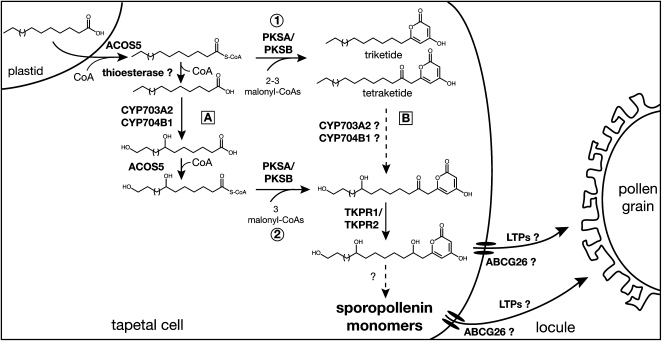Figure 11.
A Putative Scheme of Sporopollenin Biosynthesis.
Fatty acids synthesized in plastids are esterified to CoA by ACOS5 and then extended to triketide and tetraketide products by PKSs that catalyze the condensation to malonyl CoA. Extension of fatty acyl-CoAs by PKSs may take place either directly (route 1) or after hydroxylation by CYP450s (route 2). CYP450 hydroxylases have been shown to have free fatty acids as substrates, thus implicating CoA ester hydrolysis by a putative thioesterase and regeneration of the CoA esters by ACOS5 upstream and downstream of the hydroxylation step, respectively (route A). However, hydroxyl groups might be putatively introduced by CYP450s at the tetraketide level (route B) before the reduction of the carbonyl function by TKPRs. Resulting polyhydroxylated tetraketide compounds may then be exported by ABCG26 and lipid transfer proteins (LTPs) to the locule as sporopollenin building units or further processed before transport and polymerization in the pollen wall.

